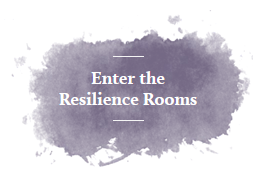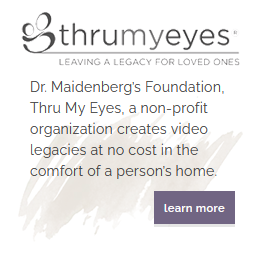Because our limbic system, sympathetic nervous system, and amygdala are suited to anticipate danger, our body and mind often spiral so significantly that we experience a genuine sense of lack of control. We lose touch with our rational thoughts and bodily sensations and our systems go offline. To clarify, not all triggers are negative, but when they are, they can prompt a reaction that’s not commensurate with what actually occurred in the moment.
Why Do We Get Triggered?
According to the early 20th-century theories of Carl Jung—specifically his description of the dark shadow and golden shadow—triggers are derived from projected parts of ourselves, past versions of ourselves, and wounded parts of ourselves.[i] They are, in this psychoanalytic telling, parts of ourselves we may want to cut off, disown or avoid.
For example, we may want to disown feelings of rejection, of not being heard, that we’re being controlled or taken advantage of, etc. There may also be characteristics that we prefer not to identify with, such as being disorganized, impulsive, aggressive, emotionally sensitive, etc. This strong emotional reaction is often followed by outward blame and frustration.
Triggers may elicit previous traumas, which can lead us to re-experience the pain, confusion, and impulse to protect and defend ourselves. We have a tendency to employ an array of defense mechanisms that we enacted to prevent or mitigate hurtful and painful feelings before, during, and following the trauma(s).
We may also be triggered by conscious and unconscious stimuli.[ii] According to neuroscience researchers, we barely control our thoughts because our unconscious is what’s really in charge.[iii] When a stimulus is unconscious, it may not immediately or readily occur to us why we reacted as we did, which may make it slightly more challenging to process and address the experience effectively.
In your pain you find values, and in your values, you find your pain.[iv] Because values are personal choices that hold great meaning, you may experience pain associated with yours. For example, if you value connection and get into an argument with someone who matters, you will undoubtedly feel triggered by frustration and disappointment regarding how things evolved and be fearful about the demise of your relationship.
The best thing you can do is to increase your self-awareness so that you can be in touch with what’s prompting the trigger and how it’s impacting you. Self-reflection and slowing down the process can leave room for insight, flexibility, and change.
How Triggers Impact Our Relationships
David Richo identifies nine categories of triggers.[v] These include feeling self-conscious, being discounted, feeling we are controlled, feeling taken advantage of, feeling vulnerable, relationship experiences (e.g., feeling smothered), boundary concerns (e.g., disrespecting personal space), feeling uncomfortable about what is happening, and fearing what might happen.
When we get triggered, we’re often compelled to blame others and suggest that they were responsible for inciting our reaction. For example, if your partner said something that you found personally offensive, you can become activated because you assume they didn’t care enough about you. You may raise your voice, demand that they should have known better, notice how hurtful their behavior was, and insist that they apologize.
Your partner may have a reaction based on your reaction and not be able to hear you or respond to you the way you need them to because they too are triggered. Then, you may both end up triggered and have a challenging time recalibrating. Over time, a recurring cycle like this one can lead to distress, discomfort, and less joyfulness and contentment in the relationship.
Taking Personal Responsibility
Take responsibility for your part in the situation. The way to do this effectively is to ask yourself, “Why and how am I getting triggered?” The why reflects why this response is being evoked. For example, when I experience my friend showing up late to meet me, my automatic thought is that she doesn’t value my time and elicits concern that my feelings and needs don’t matter to her. How I get triggered is I get tightness in my chest, a rapid heart rate, and my mind races. I become immensely frustrated, let her know how utterly disappointed I am, and want her to feel badly for how she treated me. I may even refer to her as selfish, uncaring, and flighty.
I then consider, “How else can I see this?” This helps to initiate a pause between the thinking and doing, consider my automatic beliefs, the narratives I tell myself, and to consider what may be going on for the other person, offering an alternative explanation to my assumptions and expectations. I may consider that it’s not personal or intentional, that it’s a general issue for her, and one with which she struggles. I may opt to speak to her about it respectfully and compassionately and offer her support rather than chastising her for her limitations. I would appreciate that kind of reaction from a friend if I struggled.
Triggers allow us to pinpoint what’s important to us and what sticking points we may need to further work on. They give us a prime opportunity to challenge our inflexible and rigid beliefs, be more accepting of who we are, and focus on and heal the loss of fragmented parts of ourselves.
Work toward having compassion for and healing those parts of yourself that need your love and understanding. Diminishing trigger reactions will direct you toward being more in line with who you are and who you prefer to be. Free yourself from getting hooked once and for all.
Look out for Part 2 of this article, identifying specific and direct ways to further work on your triggers.
Here’s a Grounding Guided Meditation led by me. Please subscribe to my YouTube channel for more interviews and guided meditations.
Blog as published in Psychology Today.
References
[i] Ryan, M. (2021). The golden shadow method: A path of awakening your full human potential. Independently Published.
[ii] Reiter, M. (2016). Triggers: Sparking positive change and making it last. London: Profile Books
[iii] Morsella, E., Godwin, C., Jantz, T., Krieger, S., & Gazzaley, A. (2016). Homing in on consciousness in the nervous system: An action-based synthesis. Behavioral and Brain Sciences, 39, E168. doi:10.1017/S0140525X15000643.
[iv] Hayes, S. C., Strosahl, K. D, & Wilson, K. G. (2012). Acceptance and Commitment Therapy: The process and practice of mindful change (2nd ed.). New York: Guilford Press.
[v] Richo, D. (2019). Triggers: How we can stop reacting and start healing. Boulder, CO: Shambhala Publications, Inc.



